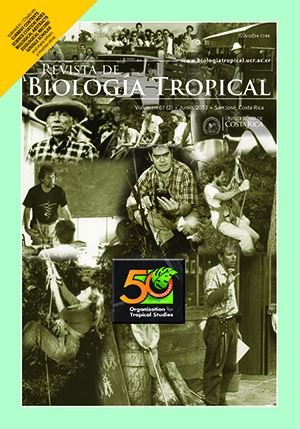Abstract
Predation is one of the major selective agents influencing evolution of color patterns. Cryptic color patterns decrease detection probability by predators, but their concealing function depends on the background against which patterns are seen; therefore, habitat use and color patterns are tightly linked. In many anole species, females exhibit variation in dorsal color patterns; the drab and perhaps cryptic colors of the patterns suggest a predator avoidance function behind this polymorphism. We tested whether these different color patterns experience different predation rates depending on their microhabitat. We expected each pattern to form at least one optimal combination with a typically used micro-habitat that would result in lower predation compared to other morphs in the same micro-habitat. We tested this hypothesis for anoles at La Selva, Costa Rica, using clay models resembling a common species at this site: Norops humilis. The first experiment tested for variation in predation on various substrates. We included leaf litter, live leaves, and two size classes of woody stems, using 44 models for each pattern substrate combination. A second experiment tested effects of perch height (10 and 60cm) and diameter (<2cm and >5cm), with 50 models for each pattern perch combination. We found differences in predation rates between the morphs depending on their micro-habitat. Specifically, the striped morph had a significant advantage over the others on green leaves. In the second experiment, striped morphs showed significantly lower predation on low than on high perches, irrespective of perch diameter. Reticulated models had an advantage over other morphs on thin stems for the first experiment, where models were placed about 60cm high. Diameter did not have a significant effect on predation for reticulated morphs when height classes were combined. Dotted models did not experience an advantage over the other morphs in any of the treatments. In leaf litter and on thick perches no morph had any advantage over another, and leaf litter predation rates were generally low. These results support a role for predation in maintaining multiple female morphs within small Costa Rican anoles, such as N. humilis.##plugins.facebook.comentarios##
Downloads
Download data is not yet available.






